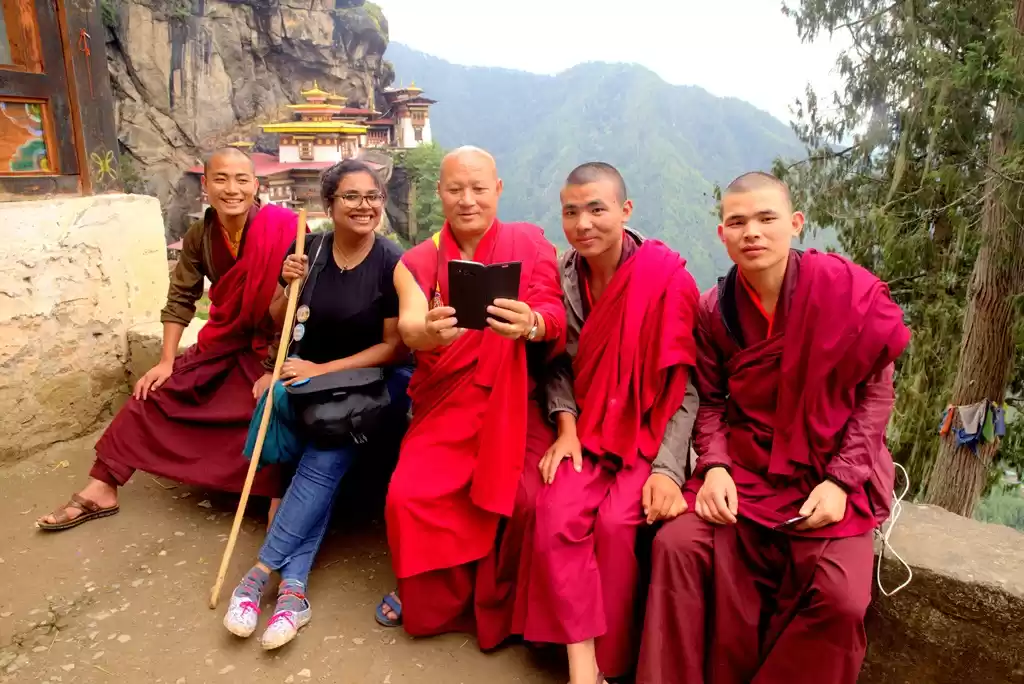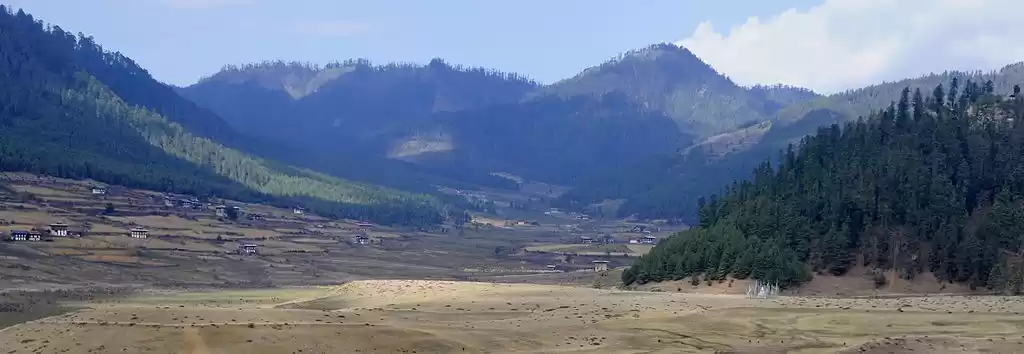Bhutan is a small himalayan kingdom that offers a unique and captivating tourism destinations that combines natural tourist destination, cultural richness, sustainable practices. It's tourism policies relies on ""high value, low impact," that ensure tourism development is not affected by environment and culture.
Scenic Beauty and Natural Attractions:
It's is renowned for its breathtaking landscapes that features snow-capped peaks, lush valleys, dense forests, pristine rivers. It's diverse topography and climate makes it ideal for nature lovers and outdoor enthusiasts. One of the popular tourists destination that include the paro valley, home to the iconic taktsang monastery (Tiger's Nest), which is situated on the cliffside 900 meters above the paro valley floor. The Phobjikha Valley is another must-visit tourist destination that is known for its stunning scenery and is the winter home of the endangered black-necked cranes.
Cultural Heritage and Festivals:
It's rich cultural heritage is deeply rooted in buddhist traditions where visitors can explore ancient monasteries, dzongs(fortresses), shrines that shapes the landscape and thimpu is the capital city that blends with tradition and modernity with the tourists attractions like the tashichho dzong,national memorial chorten, folk heritage museum. It's rich vibrant festivals which are held annually in various regions offer a cultural experience where masked dance, music, rituals are particularly popular among tourists destination.
Sustainable Tourism Practices:
It's commitment to sustainability is unique to its approach where government has implemented a policy that requires tourists to pay a daily tariffs that covers accomodation, meals, licensed guide and transportation which ensures high standard of service that helps to control number of tourists throughout the year which minimizes on the environment impact. It's portion of tariff is linked to social welfare programs, infrastructure development, environmental conservation.
Adventure and Wellness:
The country offers range of activities trekking, mountain biking, and river rafting. The most challenging and rewarding trekking routes is jomolhari trek and snowman trek which offer a spectacular view of the himalayas that offer opportunities for remote villages and it's considered as an ideal destination to wellness tourism with numerous retreats and resorts offering traditional Bhutanese healing therapies, yoga, and meditation in serene settings.
Unique Aspects:
It's gross national happiness over gross domestic product reflects its holistic approach to development that emphasize on the well being of its people and the preservation of its culture and environment. It's philosophy on tourism industry provides visitors with a distinctive and enriching travel experience. It's a perfect blend of preserving its heritage and environment which provide a high quality experience ensures that tourism in Bhutan is both unique and rewarding.
Phobjikha Valley, Bhutan

Phobjikha Valley which is situated in the heart of Bhutan which is a picturesque glacial valley that offers an unparalleled experience for bird watchers and nature enthusiasts. It's also known for its scenic beauty and rich biodiversity where this picturesque valley is a protected region that forms part of the larger Jigme Singye Wangchuck National Park. The valley is a home to endangered black-necked cranes, making it a must-visit destination for bird lovers alike. Phobjikha Valley is a U-shaped glacial valley that offers stunning picturesque views of lush green valleys and paradise for bird watcher. The valley is situated around 3,000 meters (9,842 feet), providing a cool and temperate climate. It's covered with dwarf bamboo, which serves as grazing grounds for livestock and a habitat for numerous wildlife species. It is part of the larger Jigme Singye Wangchuck National Park, emphasizing its ecological importance. In winter month between october to february, the valley hosts around 300 black-necked cranes, migrating from the tibetan plateau. The Royal Society for Protection of Nature (RSPN) monitors and protects the cranes, ensuring their habitat remains undisturbed. The black-necked crane festival is held annually in november month that celebrates the arrival of these majestic birds with traditional songs, dances, and educational programs. The crane Information and observation centre provides detailed insights into the cranes' behavior and conservation efforts that is equipped with telescopes for closer views. The valley is home to over 200 bird species, including himalayan griffon vultures, eurasian sparrowhawks, black-tailed crakes. The valley’s diverse flora includes rhododendrons, primulas, and blue poppies, Bhutan’s national flower. The valley is also inhabited by mammals such as red foxes, sambar deer, and himalayan black bears. The 17th-century gangtey monastery that is situated on a hilltop, offers spiritual solace as well as panoramic views of the valley. The gangtey nature trail is a popular trekking route that provides a gentle hike through forests, meadows, traditional villages. Visitors can experience authentic bhutanese hospitality by staying in local homestays, engaging with the community and their traditions. Tourists can visit local farmhouses, learning about traditional farming methods and enjoying homemade meals. The valley’s artisans produce exquisite handicrafts, including traditional Bhutanese weavings and wooden carvings. Phobjikha Valley has no electrical poles, preserving its pristine beauty; electricity is supplied through underground cables. The name "Phobjikha" means "valley shaped like a bulb" in the local language, a reference to its unique topography. The valley is dotted with sacred trees, believed to be the abodes of local deities. The valley’s lodges and hotels follow strict eco-friendly practices, ensuring minimal environmental impact. It's not only a place for bird watcher but also a destination that offers a blend of natural beauty, rich biodiversity, cultural richness, sustainable tourism practices. It's a perfect blend of natural beauty, rich biodiversity, cultural richness, sustainable tourism practices.




































